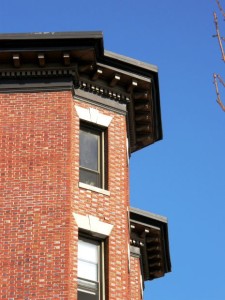It’s not uncommon to hear Vermont employers complain that the high cost of housing is a deterrent to recruiting employees. Everyone knows Vermont needs more affordable housing. The question is, where should new affordable housing best be located?
The Fair Housing Project contends that it should be located near town centers, in mixed income areas that have good access to employment, transit and other services.
Some municipalities offer more affordable housing than others. In an effort to throw some light on where the needs are, we introduced the workforce housing index in our last post. This is the number of subsidized housing units for every 100 jobs in a town. Subsidized units are affordable, by definition, to people earning up to 80 percent the region’s median income, including workers in relatively low paying jobs. (Granted, affordable housing is also in short supply for middle-income workers – teachers or police officers, for example. A more comprehensive workforce housing index would take their needs into account, too.)
Without further ado, here’s how Vermont’s “major employment centers” rank in providing affordable housing. Again, the index is the number of subsidized housing units per 100 jobs:
Winooski: 24.5
Barre City: 9.9
Springfield: 7.5
Brattleboro: 6.9
Burlington: 6.8
Randolph: 6.3
Vergennes: 6.3
Rutland City: 6.1
St. Johnsbury: 5.9
St. Albans Town: 5.7
Bennington: 5.5
St. Albans City: 4.1
Manchester: 4.0
Montpelier: 3.9
Colchester: 3.7
Middlebury: 3.3
Newport: 3.2
South Burlington: 3.2
Lyndon: 2.9
Rutland Town: 2.7
Essex: 2.5
Stowe: 2.2
Morristown: 2.2
Hartford: 2.0
Williston: 1.7
Shelburne: 1.6
Waterbury: 1.6
Derby: 1.5
Milton: 1.4
Woodstock: 1.2
Rockingham: 0.6
A couple of observations: Municipalities with public housing authorities tend to rank high on the list, as might be expected. As for other towns that don’t have public housing authorities, well, some are clearly pulling their weight more than others.
In Chittenden County, Burlington and Winooski have the great majority of subsidized units, but they account for less than half the jobs. (The jobs total of Williston, South Burlington and Essex alone exceeds that of Burlington-Winooski.) Clearly, other Chittenden County towns have a ways to go in meeting the affordable housing needs of their workforces.
